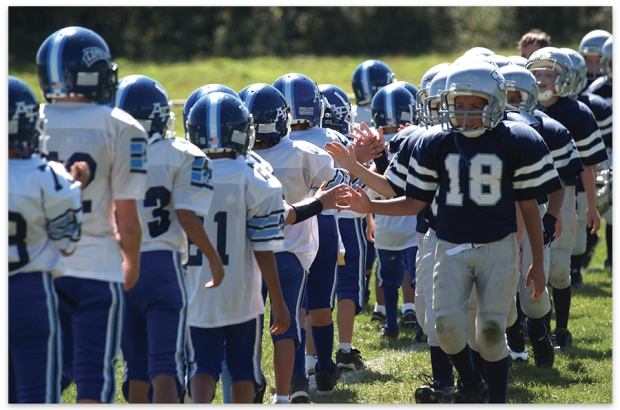Looking into today’s status of sportsmanship

For more than a decade, I’ve been hiking my sons to and from soccer, lacrosse, and football fields, basketball courts, baseball diamonds, and swimming pools for games, meets, tournaments, and practices. I’ve traveled from here in the county to across the state and north over the Carolina border. It’s been a lot of mileage, a lot of time, and an outpouring of a lot of love for my boys… and for sports.
Whether it’s been on the rec league level, travel ball, or now in high school, I’ve seen my fair share of sports from the sidelines. And I chose to. I sign them up all of these years, buy the equipment, and pay for the extra training because I believe in the benefits of sports in young lives–it aligns with the way life experiences will play out later in the leadership and teamwork of their careers and relationships in the future.
I was also an athlete in several team sports from elementary school through high school and I loved it. But, today, I’m seeing a shift in sports, and I don’t love it: The fading away of sportsmanship. Not a complete disappearance, a fading.
By definition, sportsmanship is “the quality of showing fairness, respect, and generosity toward the opposing team or player and for the sport itself when competing.”
I’m not saying I expect today’s athlete not to be aggressive and go all out for the win, but that healthy competitive spirit has gone too far past the whistle after each play, past the buzzer and the handshakes after the game, past the field, and has spilled out onto the sidelines and into the stands.
I feel like sports has been tainted by a win-at-all-costs attitude. From the players to the coaches to the parents, all are the culprits. I’ve witnessed players yelling obscenities at each other across the field, parents cursing out refs, players ready to fist-fight after a penalty was called on the opposing player, and cheap shots taken that put a player in the hospital–resulting in a smirk from the cheap shot player, who was then rewarded with a “way to get the ball” from the coach.
Here’s a play-by-play of all parties involved in good (or bad) sportsmanship:
The Athletes
It’s a fact (just ask the U.S. Government Accountability Office) that there are health, academic, personal, and social benefits for student athletes to be involved in sports–and more than half of kids in the country play team sports. Studies show that sports participation leads to healthier bones and joints, better grades and standardized test scores, increased self-esteem, and leadership skills in knowing how to handle both achievements and setbacks.
But it’s reported that today, it’s becoming more common for athletes to be tackling more negative experiences and demeaning behavior from opposing athletes and spectators than the positive takeaways, which leaves them feeling short on the real benefits of a true sports competition because it’s become acceptable behavior.
The Coaches
Coaches are the leaders, naturally, with many young eyes and ears following their every move–so they need to lead by example. Which comes into play with player behavior shown on the field. Integrity should never be sacrificed to win a game. Coaches need to encourage a team to play within the rules. They also need to discourage taunting, over-the-top celebrations after a hit or score, and offensive gestures. Even the NFL is cracking down on this. Respect for the other team and the refs needs to be a priority. And teamwork is about working together.
The Parents/Spectators
Parents know the benefits of their children being involved in sports, of course, but when do they go too far and emotions run too high when they see their little Johnny winning or losing in the game? I mean, there isn’t a paid salary riding on the game. Just over 7% of high school athletes (about 1 in 13) go on to play a varsity sport in college and less than 2% of high school athletes (1 in 57) go on to play at NCAA Division I schools, according to scholarshipstats.com. A survey conducted by the National Federation of State High School Associations (NFHS) shows that 76 percent of state directors felt that spectators cause a significant number of problems with sportsmanship–that’s over the actual athletes! Could it be athletes are mimicking behavior learned from parents’ actions?
The Officials
I’ll close with a stat on today’s referee status. Since the COVID-19 pandemic, officiating registrations are down 23 percent nationwide. Why? Longtime umpires and refs say the number one reason is due to lack of sportsmanship.
So, what’s the solution to the dying spirit of sportsmanship? While there’s no magic wand or cheer pom-pom to completely bring it back, it might just take a little bit of perspective for those of us who love sports: Remember, win or lose, it’s just a game.